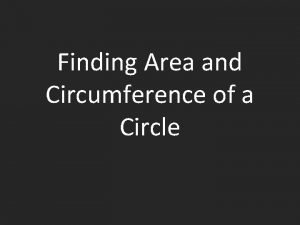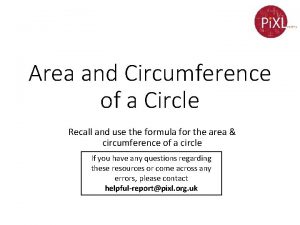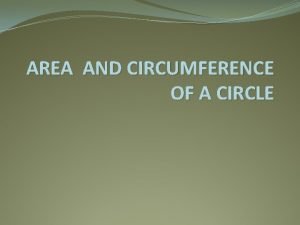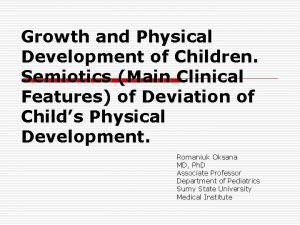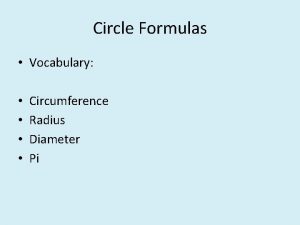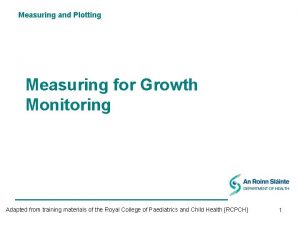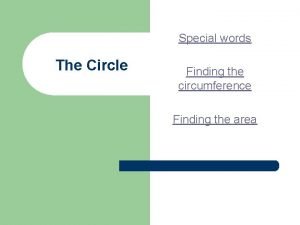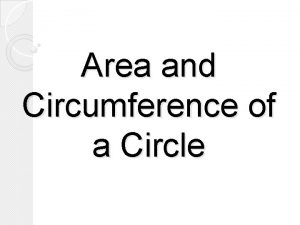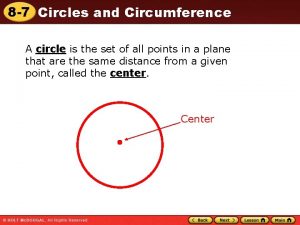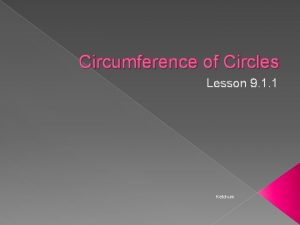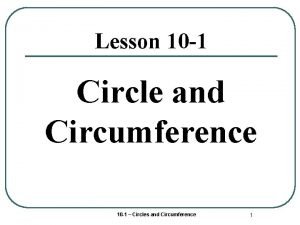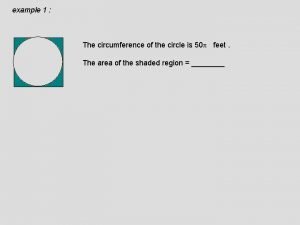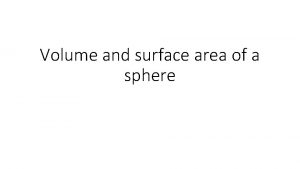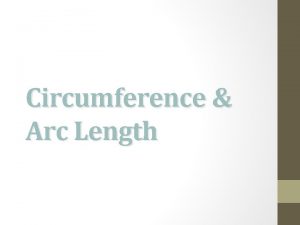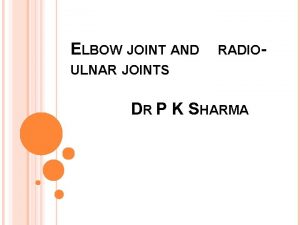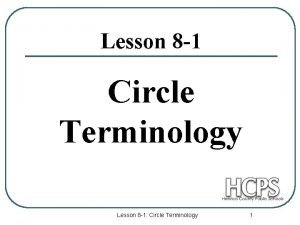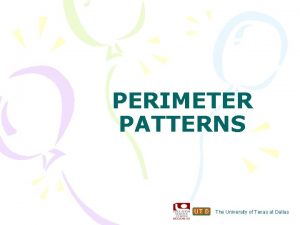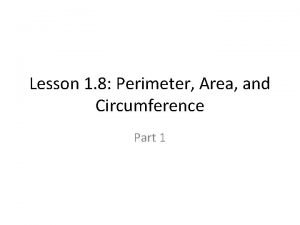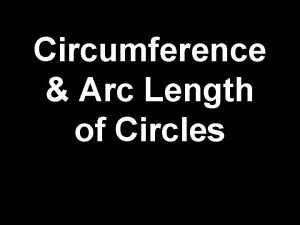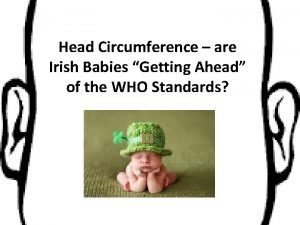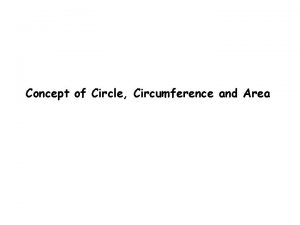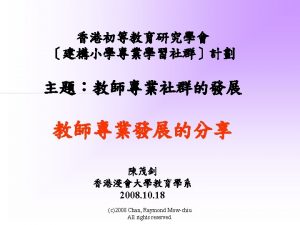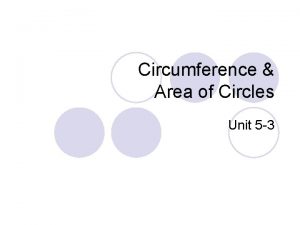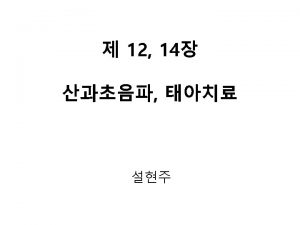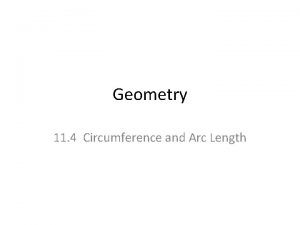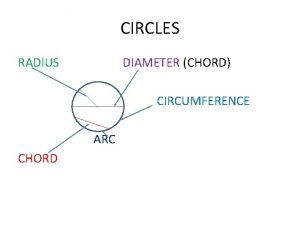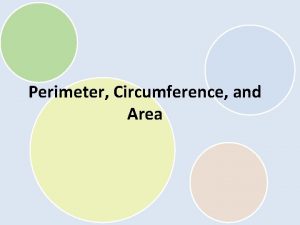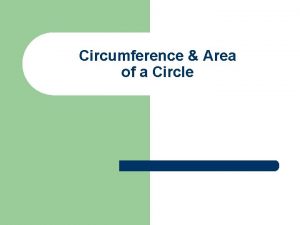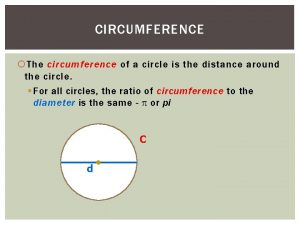GETTING AHEAD IN V circumference 2018 INSERVICE InService












































- Slides: 44

GETTING AHEAD IN V circumference 2018 IN-SERVICE

“ ▪ In-Service Objective: Routinely obtain accurate head circumference (HC) measurements at certification appointments for all infants and children under 2 years of age. 2

What is Head Circumference?

Definition ▪ Head Circumference is the measurement around the largest part of the head on the brow above the eyes and ears around to the back of the head. ▪ HC measurement does not take much time to complete so it is an efficient tool to add to our toolkit for assessing healthy growth and detecting potential risk. 4

Let’s do it! ▪ Head circumference measurement is optional for WIC, however, several Oregon WIC agencies routinely conduct this screening to help assess normal growth and development. ▪ ▫ Oregon WIC encourages all WIC clinics to add HC measurements to their assessment process. 5

Why take HC measurements?

Rapid growth ▪ ▪ 7 A baby's brain and head grow to 80 percent of adult size during the first two years. The average newborn's head circumference measures about 13 3⁄4 inches, growing to about 15 inches by age one month and between 18 and 19 inches by age two years.

Recommended… ▪ The American Academy of Pediatrics recommends taking head circumference measurements for important information that can lead to the discovery of growth issues such as microcephaly and macrocephaly. ▪ 8

Microcephaly Scientific name for a head that is too small Strongly associated with malnutrition, intellectual delays, seizures, and problems with the eyes, heart, kidneys, and urinary tract One cause is the Zika Virus ▪ 9

Macrocephaly Scientific name for a head that is too big • • ▪ 10 Can be caused by hydrocephalus that occurs when fluid is unable to escape the brain. This can be a life threatening condition. Has been associated with autism in some cases.

Washington County WIC Experience with Hydrocephalus ▪ ▪ 11 . • In the past 14 years, Stephanie, a Washington County WIC RD, has made referrals to health care providers for several children whose heads have grown faster than normal. • Several of these children went into immediate surgery.

“ 12 Stephanie was told: “Thank you for mentioning something about his head. I called his doctor and they did a scan then rushed him into surgery to place a shunt. ”

Grateful participants! ▪ WIC staff can use HC measurements to help WIC families… just like Stephanie! ▪ 13

How can we get accurate HC measurements?

Use the right equipment ▪ Flexible, non-stretchable measuring tapes have been sent to each agency from the State WIC office. ▪ ▪ Additional tapes can be ordered through Shopify as needed. Tapes can be cleaned with antiseptic wipes like other lab equipment. 15

Use the right technique ▪ Place the tape around the widest part of the head: • • ▪ ▪ one to two finger widths above the child’s eyebrows over the most prominent part of the back of the head Tighten the tape snugly to fully compress down the hair. Find the spot where the line meets the numbers on the tape and round to the nearest 1/8 inch. 16 ▪

Richard from Washington County demonstrates this technique… 17

Helpful tips… ▪ ▪ 18 Repeat the measurement for accuracy… especially if a child is wiggly! Consider taking the measurement before undressing the child to reduce potential fussiness. Describe the process to older children as trying on a hat, wearing a crown, seeing how much their head is growing, etc.

“ Practice: What is the difference between these two measurements? Which technique is better? 19

Practice ▪ ▪ 20 On the previous slide, the picture on the right obtained a measurement that was 1 inch larger than the picture on the left as the tape was positioned around the widest part of the head. Use the tape to measure the head of a coworker or a doll. Take two measurements to assure an accurate reading.

Where do we document HC measurements in TWIST?

Medical Data Screen ▪ ▪ 22 Document measurements to the nearest 1/8 inch in the head circumference field on the medical data screen in TWIST. Once the measurements are entered, HC growth graphs will be available to view.

Risk Assessment ▪ ▪ ▪ 23 TWIST will automatically assess low head circumference and assign Risk 152 when appropriate. This functionality is currently present in TWIST. WIC staff will assess for large head circumference. There is not one specific risk for a larger than average measurement. If an underlying cause is known, however, document this as a separate medical risk.

What is Risk 152?

Risk 152 ▪ ▪ ▪ Risk 152 Low Head Circumference is assigned when a head circumference measurement is at or below the 2 nd percentile for age. This risk is only assigned for children under 2 years of age. If at risk, refer to the health care provider. WIC RDs can be a good resource for helping with referrals and follow up. Referring at-risk children is a top priority for WIC staff and a key reason for taking HC measurements. 25

Risk 152 • • 26 For preterm or early terms infants, head circumference is based on adjusted age. The size of head will often catch up with their chronological age group before length and weight.

Risk 152 ▪ ▪ 27 The information sheet for Risk 152 provides additional details and is attached to this in-service. It will be added to the Nutrition Risk training Module

How about some case studies?

Normal growth ▪ 29 Here is a typical growth pattern for HC. It is following the curve but on the higher percentiles. Why might that be the case?

Normal growth ▪ 30 Family genetics can account for some children who consistently track at the top or bottom of the HC growth graph. Look for trends just as you would for weight gain or growth in length/height.

Preterm growth ▪ 31 This is an example of a HC growth pattern for a preterm infant. When born at 26 weeks and 1 lb 15 oz, the HC was well below the age adjusted HC graphs. How do we explain what we are seeing here?

Preterm growth ▪ 32 This preterm infant is demonstrating catch up growth in head circumference that is consistent with the progress seen in length and weight.

Down Syndrome ▪ 33 Here is an example of a HC growth pattern for a child with Down Syndrome. The smaller head circumference is common with Down Syndrome. Should HC still be tracked?

Down Syndrome ▪ 34 Yes, even with a condition where a smaller head circumference might be anticipated, track the child’s progress and refer to the health care provider if unusual patterns develop.

Unusual pattern ▪ 35 Here is an unusual pattern for a child with a small head circumference. What might be an explanation for the drop in HC at the fourth measurement?

Unusual pattern ▪ 36 The HC looks to have been measured incorrectly at one point. HC, like height or length, can stay the same or increase but not decrease. It is important to use good technique in order to get accurate outcomes!

Analysis ▪ 37 In this example, the infant was born at 37 weeks and weighed 5 lbs. How would you interpret this graph?

Microcephaly ▪ Measurements this far below the graph indicate a serious concern. Additional assessment is needed. In this case, the mother reported that she might have been exposed to the Zika virus while pregnant. Referral to her health care provider would be appropriate. 38

Analysis ▪ 39 In this example, the child’s head circumference is increasing faster than normal. What could cause this pattern? How should this situation be handled?

Macrocephaly ▪ 40 Hydrocephalus could be one explanation for a measurement that is above the normal range of HC for age and increasing. Regardless of the cause, any concerns about head circumference should be referred to a health care provider for evaluation.

“ 41 To Summarize: ü Head circumference is an important tool for ü ü assessing infants and children for risk of problems with growth and brain development Early detection and intervention lead to better outcomes Making referrals encourages the coordination of care between WIC and health care providers

Questions? Talk with your training supervisor or RD Ask your state nutrition consultant Contact Vernita Reyna at vernita. d. reyna@state. or. us or 971 -673 -0047 42

Resources CDC Zika website: http: //www. cdc. gov/zika/index. html National Birth Defects Prevention Network: http: //nbdpn. org/ US Dept of Health and Human Services: measuring technique: https: //depts. washington. edu/growth/module 5/text/page 5 a. htm 43

In-service research provided by Justin Hunt OHSU Dietetic Intern December 2017 44
 The secret of getting ahead is getting started
The secret of getting ahead is getting started Inservice
Inservice Inservice examples
Inservice examples Inservice training assignment
Inservice training assignment Que letra continua m v t m j
Que letra continua m v t m j How do you find circumference
How do you find circumference A circular fountain with a 5-m radius
A circular fountain with a 5-m radius Hips
Hips Half circle formula
Half circle formula Bangle test for mid arm circumference
Bangle test for mid arm circumference Circle-recall
Circle-recall Area of quadrant
Area of quadrant What is the circumference of a half dollar
What is the circumference of a half dollar How to read growth chart
How to read growth chart Lesson 1 circumference page 619 answers
Lesson 1 circumference page 619 answers Perimeter of a circle worksheet
Perimeter of a circle worksheet Acsm waist circumference chart
Acsm waist circumference chart How to label radius
How to label radius Diameter formula
Diameter formula How do you find the circumference of a sphere
How do you find the circumference of a sphere Normal head circumference of newborn
Normal head circumference of newborn How to find circumference if you have diameter
How to find circumference if you have diameter Y2mq
Y2mq Area of a circle
Area of a circle 7 diameter to circumference
7 diameter to circumference Circumference lesson 9-1
Circumference lesson 9-1 What is the circumference of this circle 12cm
What is the circumference of this circle 12cm Head circumference of newborn
Head circumference of newborn Circumference of 50 ft circle
Circumference of 50 ft circle Waist circumference women
Waist circumference women Practice 1-9 perimeter circumference and area
Practice 1-9 perimeter circumference and area Composite figure definition
Composite figure definition Arc length formula
Arc length formula Area and circumference maze
Area and circumference maze Elbow bone
Elbow bone Type of polygons
Type of polygons Perimeter patterns
Perimeter patterns Circumference
Circumference Quiz 1 circles and spheres
Quiz 1 circles and spheres How to find the length of an arc
How to find the length of an arc Earth circumference km
Earth circumference km Irish babies big heads
Irish babies big heads A wheel with teeth along its circumference
A wheel with teeth along its circumference Prism volume and surface area
Prism volume and surface area Circumference versus diameter
Circumference versus diameter






